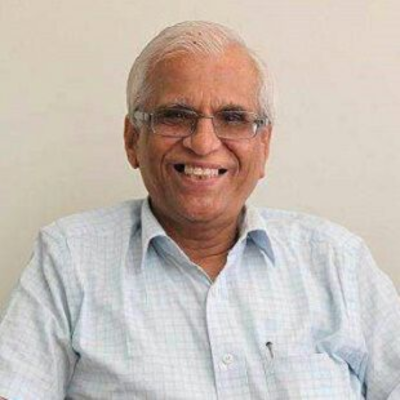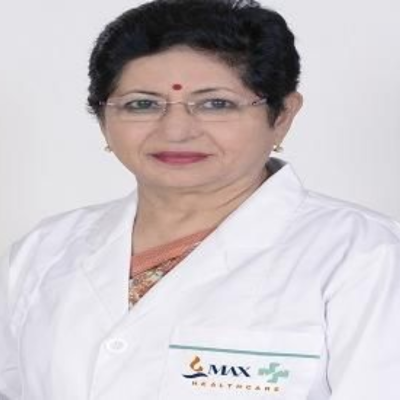The Role of Government Initiatives in Promoting Medical Tourism in India
 02 April,2025
Read More
02 April,2025
Read More
Enquire now in case of any assistance needed
 10 May,2024
10 May,2024
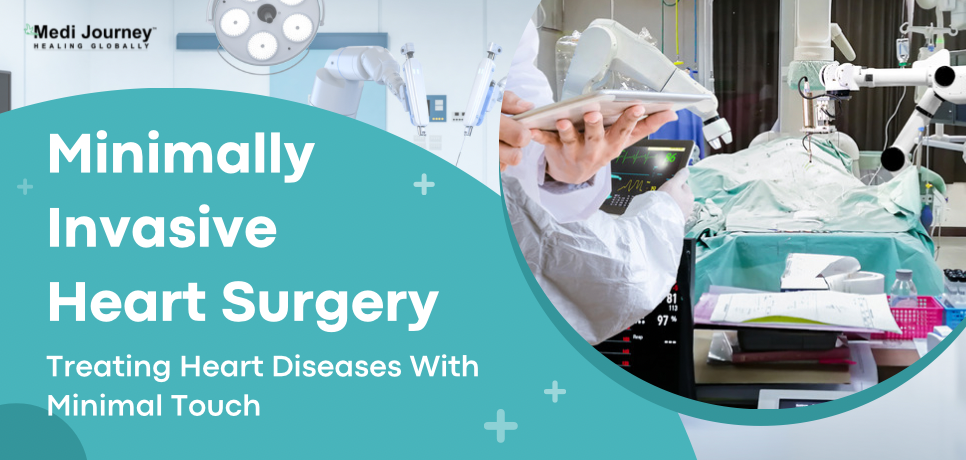
Heart patients and their families often struggle to go through the complex cardiology field. Fortunately, cardiovascular care has significantly advanced recently, with new techniques and technologies emerging. These breakthroughs have led to the development of minimally invasive heart surgeries or minimally invasive cardiac surgery (MICS).
From corrective surgeries for arrhythmias and defects to valve replacements and repairs, MICS allows surgeons to perform various heart surgeries through small incisions with specialized instruments. It is a gentler and less invasive surgical experience that benefits patients of all ages. Even elderly and frail patients can benefit from MICS, enjoying better outcomes and a quicker recovery.
Ignoring heart problems can lead to heart attack or heart failure. It can be fatal if not treated. Therefore, when cardiologists cannot correct heart-related issues through medication, heart surgery remains the only option. It should be sought without delay.
The latest technique for heart surgery is minimally invasive cardiac surgery (MICS). As the name suggests, it is minimally invasive, meaning the procedure is carried out through one or more small incisions.
During minimally invasive heart surgeries, surgeons use small, high-powered cameras, tools, and robotic arms that are inserted through the incisions. The surgeon then guides these tools between the ribs to access the heart. Compared to open-heart surgeries, minimally invasive heart surgeries lead to less scarring, reduced pain, and quicker healing times. Open-heart surgeries, by contrast, usually involve cutting through the breastbone to reach the heart.
Cardiac surgeons are well-versed in treating many heart conditions using minimally invasive techniques. Robotic heart surgery and thoracoscopic surgery are the two most common types of minimally invasive heart surgery.
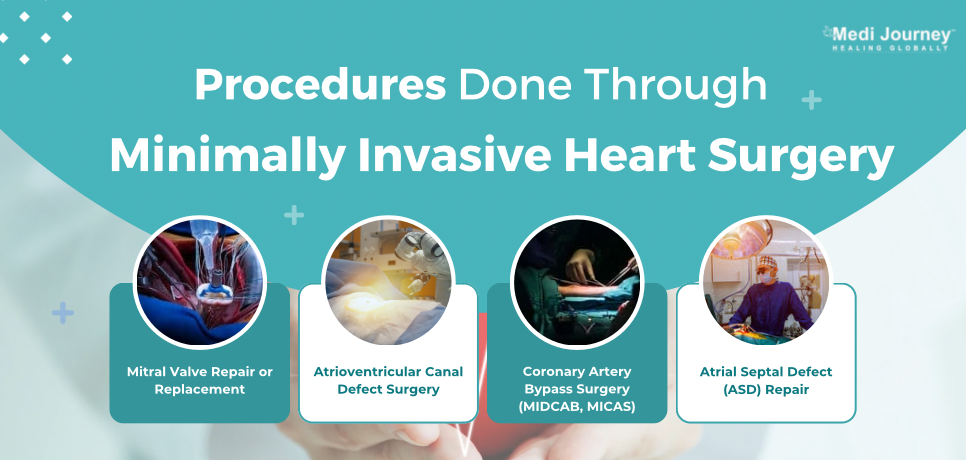
Cardiac surgeons use advanced technologies to perform a wide range of minimally invasive surgeries. Common minimally invasive cardiac surgeries include –
Minimally invasive heart surgery has better outcomes and lower risk of postoperative complications. However, it is only suitable for some. Your heart specialist will decide the best approach for your treatment. They will carefully evaluate various factors before finalizing if MICS is an option for you. These factors include –
Patients with symptoms such as persistent chest pain, dizziness, shortness of breath, fatigue, and pain in the left arm or shoulder are good candidates for minimally invasive cardiac procedures.
Surgeons use minimally invasive cardiac surgery to treat a variety of conditions. These include –
Planning for a minimally invasive heart surgery can be overwhelming, but your care team is there to help you every step of the way. They will provide valuable information about the entire process, including what to expect before, during, and after the surgery.
Minimally invasive heart surgery is done at specialized cardiac surgery hospitals. The surgery involves the following steps –
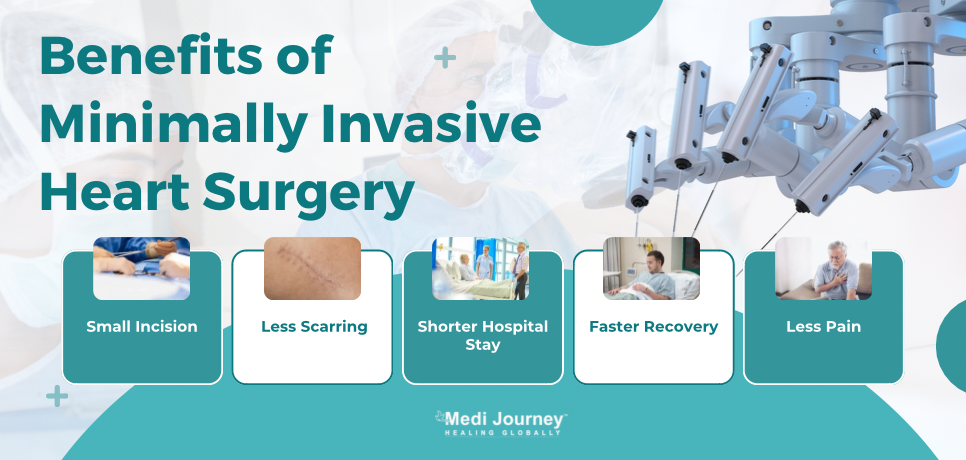
Compared to open heart surgeries, where a 10-15 inch incision is made through the breast bone, minimally invasive cardiac surgery is a better option. The incision size for MICS is 2-5 inches. It offers several benefits such as –
Heart surgery is a significant procedure that can cause pain and discomfort for patients. Fortunately, options are available to minimize these adverse effects and help patients recover faster. Minimally invasive heart surgery is a promising alternative that offers numerous benefits for patients. Healthcare teams can work with patients to determine the best course of action, ensuring a safe and effective procedure that meets their needs.
Doctor of Pharmacy
Dr. Deepanshu Siwach is a skilled clinical pharmacist with a Doctor of Pharmacy degree.?He has 4+?years of experience and has worked with thousands of patients. He has been associated with some of the top hospitals, such as Artemis Gurgaon.
Chairman
Cardiac Electrophysiologist, Interventional Cardiologist
Dr. T. S. Kler is a Padma Bhushan recipient with over 48 years of experience as an Interventional Cardiologist and Electrophysiologist. He has performed over 35,000 angioplasties and is a pioneer in electrophysiology, having established the first department in India. ...
Senior Consultant
Medical Oncologist
Nanavati-Max Super Speciality Hospital, Mumbai
Book Appointment WhatsApp UsSenior Director
Gynecologist and Obstetrician, IVF Specialist
Max Super Speciality Hospital, Shalimar Bagh, New Delhi
Book Appointment WhatsApp UsSenior Director
Gynecologist and Obstetrician, IVF Specialist
Max Smart Super Speciality Hospital, Saket, New Delhi
Book Appointment WhatsApp UsSenior Director
Gynecologist and Obstetrician
Max Smart Super Speciality Hospital, Saket, New Delhi
Book Appointment WhatsApp UsSenior Director
Gynecologist and Obstetrician
Max Smart Super Speciality Hospital, Saket, New Delhi
Book Appointment WhatsApp UsSenior Director
Gynecologist and Obstetrician
Max Smart Super Speciality Hospital, Saket, New Delhi
Book Appointment WhatsApp UsFill up the form and get assured assitance within 24 hrs!
The Art of Effective Communication
 24 January,2025
Read More
24 January,2025
Read More
Trusted by Patients
"I am Asim from Bangladesh and was looking for treatment in India for neuro. I visited many websites to get the complete information regarding the treatment but I was not satisfied as I was getting confused. In the meanwhile, one of my friends suggested I seek help from Medi Journey as he experienced his medical journey very smoothly and was satisfied with it. They have filtered the top 10 doctors as per experience, the success rate of surgery & profile, so it helps us to choose the best treatment in India. "
"For my knee surgery, Medi Journey guided me to BLK Hospital where I received exceptional care. The team's support and the expertise at BLK Hospital exceeded my expectations. Thank you Medi Journey for making my medical journey stress-free. "
"I came from Iraq for my granddaughter's eye surgery in India facilitated by Medi Journey, due to critical cases they advised us to get a second opinion from the different hospitals before going to surgery. Finally, we went to Fortis Escort Hospital, which helped us to get more confidence for diagnosis. Fortis Escort Hospital has the best eye surgeon team with the latest instruments. Thanks to all team members for providing a high-quality treatment in India at an affordable cost. "
"I came for my hair transplant in India, before coming I was so confused about choosing the best clinic and surgeon for me. But thanks to God one of my friends had a hair transplant in India through Medi Journey. He recommended me to go with them. I am completely happy with my experience with them. They were always very fast in their responses to me. the success rate of my hair transplant surgery is 100%."
"Artemis Hospital, suggested by Medi Journey, turned out to be a great choice for my treatment. The personalized assistance and medical care were exceptional. I'm grateful to Medi Journey for guiding me to a hospital that perfectly matched my needs. Highly recommended! "
"I came from Afghanistan for my treatment in India at Jaypee Hospital, Noida. I had a fantastic experience with Medi Journey. Kudos to them for their incredible support during my medical journey. They not only took care of all the logistics but also connected me with a fantastic healthcare team. Efficient, caring, and highly recommended for a hassle-free medical tourism experience."
"I am Adam from Kano, Nigeria, one of my friends from Nigeria was facilitated by Medi Journey, and he recommended us to go with them. I sent my all reports to them and within 48 hours they reverted with 4 options from different hospitals. They helped me to get a Visa letter from the hospital, arrange pick-up from the airport, and book a hotel for me. Their team is very honest and throughout our stay in India they are with us they are caring for us like his family members. BLK Hospital is the best hospital in India with a top surgical oncologist surgeon team, a very advanced OT, and a Radiotherapy department. I wish more success to Medi Journey. "
"Great experience at the Max Hospital for my spine surgery and was successfully done. I thank my neurosurgeon and his entire team. I recommended all of my country's people to Medi Journey for treatment in India, they choose the best hospital, the best doctors, and the best cost for patients."
"I came to India from Dhaka, Bangladesh for my father-in-law's cardiac surgery at Fortis Hospital. I was confused about choosing the best surgeon for him before coming, but their team helped me to choose the best hospital and best cardiac surgeon in India with very good cost and 100% success rate of surgery. I am very happy with the services, really they make my journey so comfortable that make me feel at home. Thanks again and I like people to choose "Medi Journey" as your travel guide. "
"I am Mohammad from Bangladesh came to India for my general health checkup. Medi Journey offers me the complete package including Pick-up from the airport, hotel services, and 24-hour assistance. They guide you to choose the best hospital in India, the best cost of treatment with top-most doctors and give you complete information about hotel booking, and pick-up from the airport before coming to India They have the best team to help. Always choose Medi Journey for your treatment in India."
